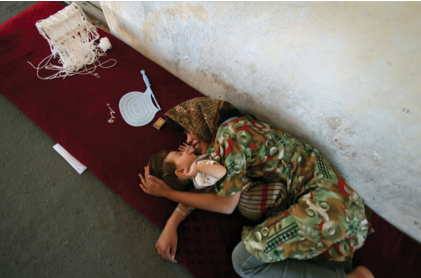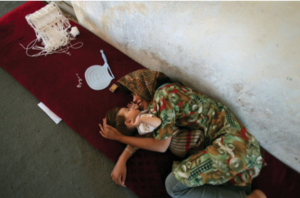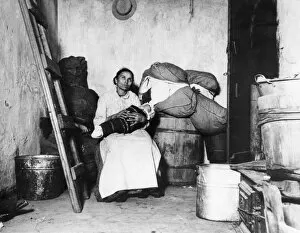WHAT IS PHOTOJOURNALISM?

Woman holds child inside of women's center
What is photojournalism?
The world of journalism is open to several different mediums designed to tell a wide variety of stories along different platforms. One thing all journalists share in common is: our main goal is to tell a story. Broadcast journalists tell a story through writing and video; print-writers tell stories through their writing; for photojournalists, stories are told with the pictures that they take.
But what exactly is photojournalism? According to photograpghyicon.com, “Photojournalism is the process of story telling using the medium of photography as your main story telling device.” However, this doesn’t mean that photojournalists only tell stories through their images; they also rely on writing as a form of story telling. Bylines, cutlines, and a photo caption (plus the photo) are what help the story come together in order to tell a complete story. But for photojournalists’, photos are the main way they tell a story. Each photo that a photojournalist takes should evoke some sort of emotion out of their viewer. Whether it’s happy, sad, excited, or uneasy, the photo should make the viewer(s) feel something.
The Golden Era began in the middle of 20th century when times were tough in America. American’s liked the rawness of witnessing those who lived life differently than them. Photojournalist’s and their images became portal’s into different world’s for people who did not fully understand what exactly was happening around America at the time. Of this era, came three important photojournalist’s: Walker Evans, Dorthea Lange and Gordon Parks. Parks was the first man of color to be recognized as a photojournalist, that in itself is historical. He photographed lots of Civil Rights movements, and even took pictures of Martin Luther king himself.
A photojournalist publication that I enjoy is Nation Geographic; the lighting that is used in the publication is simply amazing and helps tell the story. A photojournalist that inspires me with their work is named Leslie Thomas. She works on pieces that several people may not have the strength to work on. The reason I enjoy her work is because it of the rawness of it, Leslie Thomas turns her “art into activism.”
The photo below shows a mother and her child lying on the floor of a women’s center. )

Citations
Figure 2f from: Irimia R, Gottschling M (2016) Taxonomic revision of Rochefortia Sw. (Ehretiaceae, Boraginales). Biodiversity Data Journal 4: e7720. https://doi.org/10.3897/BDJ.4.e7720. (n.d.). doi:10.3897/bdj.4.e7720.figure2f
(n.d.). Retrieved August 24, 2017
(n.d.). Retrieved August 24, 2017, from http://www.ablongman.com/stovall1e/chap05/05goldagephotog.html
Gonzalez, D. (2012, February 20). Turning Art Into Activism. Retrieved August 24, 2017, from https://lens.blogs.nytimes.com/2012/02/20/turning-art-into-activism/?mcubz=1






